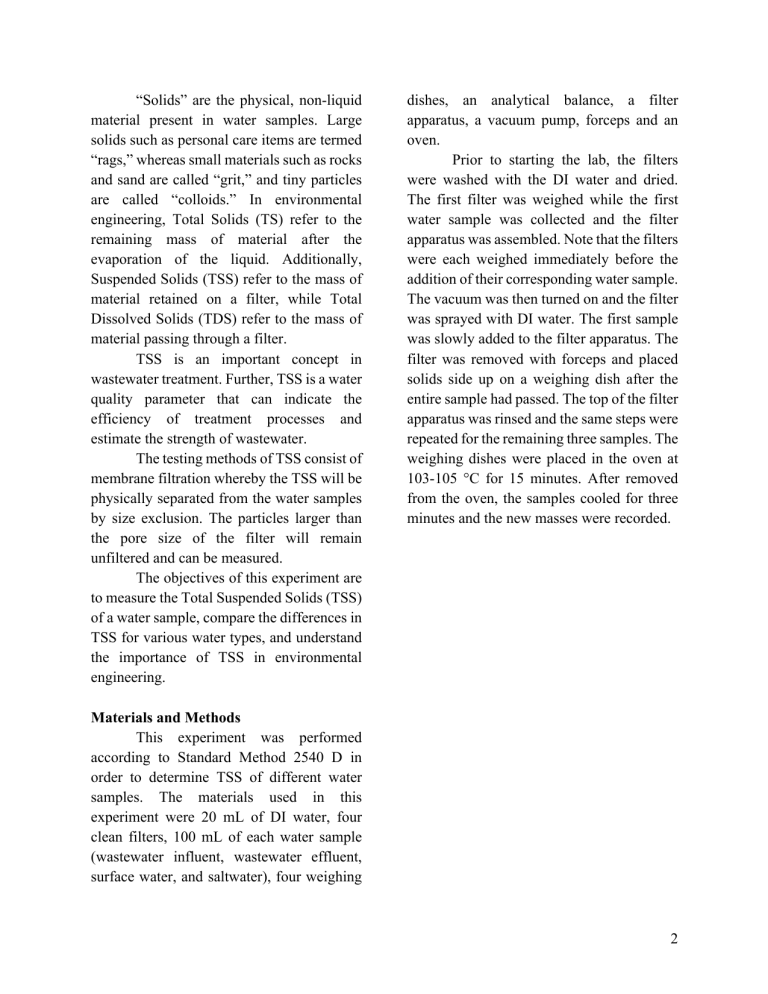
“Solids” are the physical, non-liquid material present in water samples. Large solids such as personal care items are termed “rags,” whereas small materials such as rocks and sand are called “grit,” and tiny particles are called “colloids.” In environmental engineering, Total Solids (TS) refer to the remaining mass of material after the evaporation of the liquid. Additionally, Suspended Solids (TSS) refer to the mass of material retained on a filter, while Total Dissolved Solids (TDS) refer to the mass of material passing through a filter. TSS is an important concept in wastewater treatment. Further, TSS is a water quality parameter that can indicate the efficiency of treatment processes and estimate the strength of wastewater. The testing methods of TSS consist of membrane filtration whereby the TSS will be physically separated from the water samples by size exclusion. The particles larger than the pore size of the filter will remain unfiltered and can be measured. The objectives of this experiment are to measure the Total Suspended Solids (TSS) of a water sample, compare the differences in TSS for various water types, and understand the importance of TSS in environmental engineering. dishes, an analytical balance, a filter apparatus, a vacuum pump, forceps and an oven. Prior to starting the lab, the filters were washed with the DI water and dried. The first filter was weighed while the first water sample was collected and the filter apparatus was assembled. Note that the filters were each weighed immediately before the addition of their corresponding water sample. The vacuum was then turned on and the filter was sprayed with DI water. The first sample was slowly added to the filter apparatus. The filter was removed with forceps and placed solids side up on a weighing dish after the entire sample had passed. The top of the filter apparatus was rinsed and the same steps were repeated for the remaining three samples. The weighing dishes were placed in the oven at 103-105 °C for 15 minutes. After removed from the oven, the samples cooled for three minutes and the new masses were recorded. Materials and Methods This experiment was performed according to Standard Method 2540 D in order to determine TSS of different water samples. The materials used in this experiment were 20 mL of DI water, four clean filters, 100 mL of each water sample (wastewater influent, wastewater effluent, surface water, and saltwater), four weighing 2 Results Table 1: TSS of Various Water Samples Sample Volume (mL) Clean Filter W1 (mg) Solids Filter W2 (mg) W3 (mg) TSS (mg/L) Influent 100 133.2 134.4 1.2 12 Effluent 100 128.2 129.5 1.3 13 Surface Water 100 114.3 114.9 0.6 6 100 127.0 141.8 14.8 1.3 1* 1000)* 0.6 14.8 !"",.$' 1.'&- = 100 ∗ ( Calculations: Mass remaining on filter (W3): W3 = W2 - W1 W3 (Influent)= 134.4mg - 133.2mg = 1.2mg W3 (Effluent)= 129.5mg - 128.2mg = 1.3mg W3 (Surface Water)= 114.9mg - 114.3mg = 0.6mg W3 (Salt Water)= 141.8mg - 127.0mg = 14.8mg ) = 12mg/L ) = 13mg/L 1000)* 1* 1000)* 1* )=6mg/L )=148mg/L TSS Percent Removal of the wastewater process: !""!"# − !""+## %/0& = ∗ 100% !""!"# 12213 12 148 Fig. 1: Graph of TSS values for different water samples 1* !"",%-#./& 1.'&- = 100 ∗ ( ∗ 100% = -8.3% TSS Percent Difference between the Surface Water and WW Effluent: 5!""+## − !"",1 5 %2344 = ∗ 100% (!""+## + !"",1 ) ( 2 |1326| %2344 = 13!6) ∗ 100% = 73.7% ( TSS remaining of sample: $3(&') 1000&, !"" = ∗ ( ) )*+(&,) 1, 1000)* !""+##$%&"' = 100 ∗ ( %/0& = Salt Water 1.2 !""!"#$%&"' = 100 ∗ ( 2 Discussion The results of the lab provide insight into the importance of TSS determination. The TSS values for the influent, effluent, surface water, and salt water samples were determined to be 12 mg/L, 13 mg/L, 6 mg/L, and 148 mg/L, respectively. As shown by Fig. 1, the salt water had significantly more TSS than the other samples. This could be related to the salinity and minerals present in salt water thereby contributing to a high TSS value. Additionally, the sources of TSS in natural water bodies are erosion, decayed organisms, bacteria, vehicle exhaust emissions, vehicle parts, building and construction material, road salt, road paint and pedestrian debris, atmospheric deposition of particles, and rock weathering. Several of these factors likely contributed to the high TSS value of the salt water sample. 3 Fig. 1 also indicates that the wastewater influent and effluent had nearly the same TSS with the effluent actually having a slightly greater amount of TSS than the influent. It is very unlikely that this is the case in that wastewater influent should in theory have significantly more TSS than the effluent since it has yet to undergo the treatment process. Additionally, the typical TSS values of raw wastewater range from 155-330 mg/L, with 250 mg/L being typical concentration, while wastewater effluent is typically less than 25 mg/L (Heger). The reason for wastewater treatment plants having such high TSS concentrations is the BOD (Biochemical Oxygen Demand) which can cause excessive solids generation. As a result of the lab influent TSS value being well below the typical influent TSS range, it can be inferred that an error occurred during testing. Since there is only a 1 mg/L difference between the calculated influent and effluent TSS values, it is likely that the effluent sample was mistakenly used twice during this lab. This is a major source of error that also affected calculation of the TSS percent removal of the wastewater process resulting in a negative percent removal. The TSS percent removal calculation was intended to demonstrate how TSS can indicate the level of efficiency of the wastewater treatment process depending on how large or small of a percentage the calculation yields. As shown by the calculation in this lab, an ineffective wastewater treatment (little to no removal of TSS) will yield a very small percent removal. Since there was an error in measuring the TSS of the influent (the effluent sample was used twice), the percent removal was -8.3% indicating that no TSS was removed. The TSS percent difference calculation was used to determine the closeness of the wastewater effluent and surface water TSS values. This calculation is another indicator of the efficiency of the wastewater treatment process. Theoretically, the percent difference should not be too large because this would result in contamination of the surface water by the effluent. This lab calculated the percent difference to be 73.7%. As a result of the error that was made during this lab, it cannot be concluded if this treatment plant was efficient. However, based on the typical values of TSS of influents and effluents the expected TSS percent removal should be 90% which would therefore indicate an efficient treatment plant. However, TSS is not necessarily the best indicator of treatment efficiency in that many factors can affect the TSS of samples. These factors include high flow, geomorphology catchment, type of soil, wastewater and septic system effluent and seasons. Conclusion Based on the results of the lab it can be concluded that the TSS values for the influent, effluent, surface water, and salt water samples were determined to be 12 mg/L, 13 mg/L, 6 mg/L, and 148 mg/L, respectively. An error occurred when filtering the influent sample which resulted in a much lower TSS value than anticipated. References Heger, S. (2017, September 23). How high TSS can impact onsite system performance, 4 and 10 ways to reduce it. Onsite Installer. www.onsiteinstaller.com/online_exclusives/ 2017/09/an_installers_guide_to_total_suspe nded_solids#:~:text=TSS%20is%20the%20 most%20common,less%20than%2065%20 mg%2FL. 5
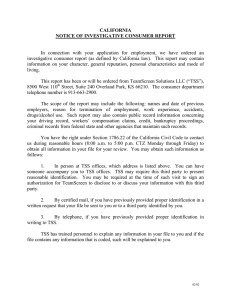
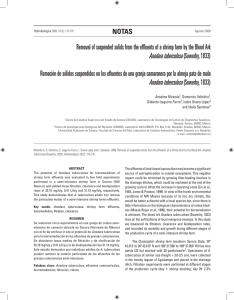
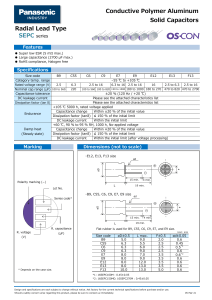
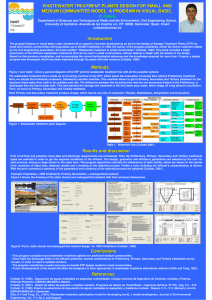
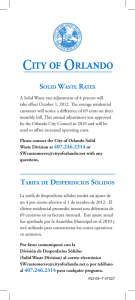
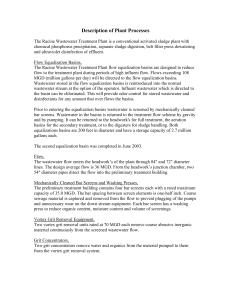
![Tríptico del curso [PDF 450KB]](http://s2.studylib.es/store/data/006258131_1-103c5de49e5ed6e7b549fd7206c4fb9a-300x300.png)
